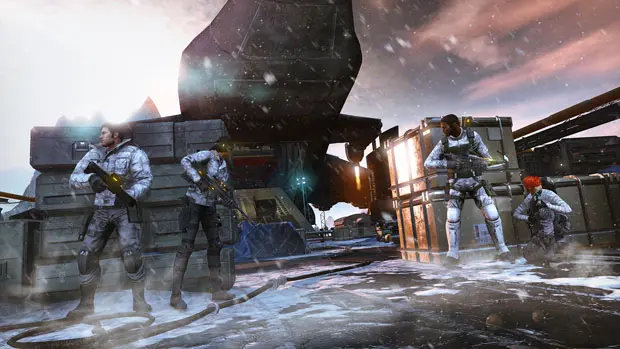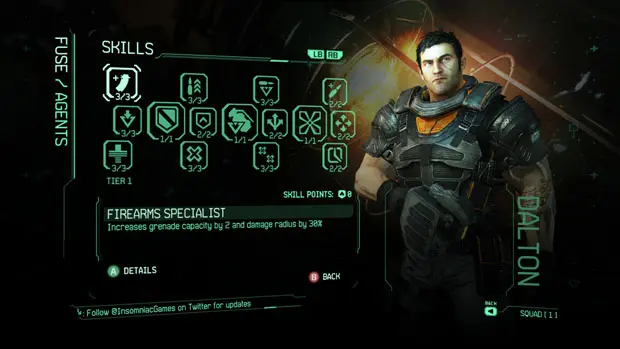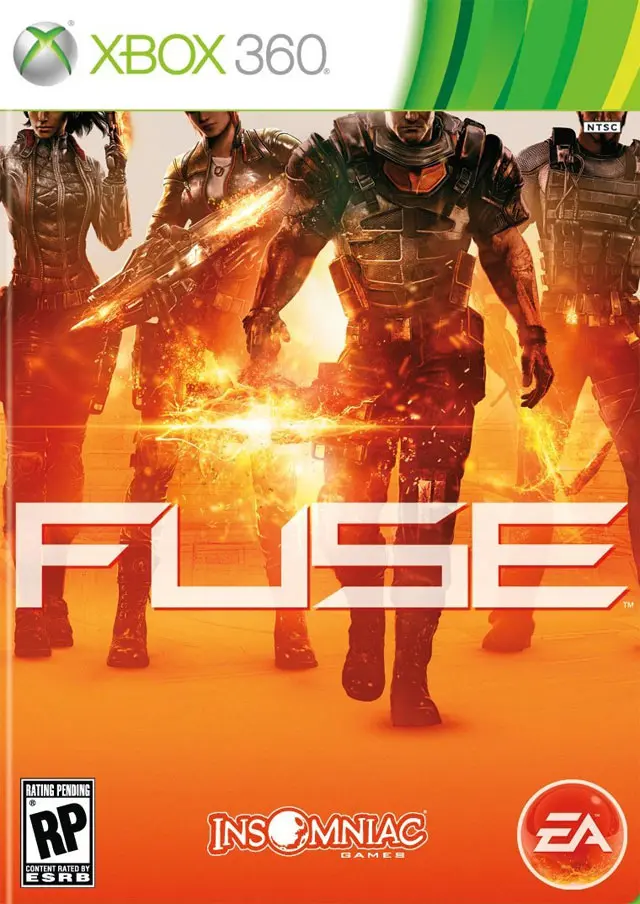 Fuse is not Resistance 4, nor should it ever be compared with that hugely popular shooter franchise despite sharing the same developer, Insomniac Games. Instead, Fuse plays akin to an experiment in challenging cooperative gaming at the expense of depth and variety, which is by no means a detriment to enjoyment if clearing area after area of heavily armed bad guys toting magical unlimited ammo hits the sweet spot.
Fuse is not Resistance 4, nor should it ever be compared with that hugely popular shooter franchise despite sharing the same developer, Insomniac Games. Instead, Fuse plays akin to an experiment in challenging cooperative gaming at the expense of depth and variety, which is by no means a detriment to enjoyment if clearing area after area of heavily armed bad guys toting magical unlimited ammo hits the sweet spot.
The McGuffin of Fuse is the game’s namesake, a mysterious alien energy dug up on Earth decades ago. Naturally mankind has been seeking to study and weaponize this energy to control its power, and equally naturally some intend to steal and use it for their own nefarious reasons that will ultimately result in doom and gloom for us all.
Enter Overstrike 9, a collection of four grizzled agents that each deliver bad action film dialogue, carry the weight of a checkered past never properly fleshed out, and fill the box of a stereotype not worth mentioning. They are dropped into a facility with no knowledge that Fuse is stored there, end up coincidentally stumbling upon a stockpile of exactly four weapons based on Fuse tech, and quickly find themselves embedded in a moral dilemma whether to finish their contracted job and bolt or keep on going on until the Fuse threat is neutralized.
If Fuse’s setup sounds remarkably generic that’s because it is. So is the gameplay, at least on the surface.

Judged as a single-player experience, Fuse suffers from what I refer to as “hourglass syndrome.” This means that the game design dictates a player enter a large area, gun down a set number of heavily armed enemies in said large area, then get funneled down into a tiny area to reload and search for XP points and money. Behind the next door, corridor or kicked out vent cover is another large area to clear, and the cycle repeats itself ad nauseum.
Insomniac Games makes little effort to break this pattern with only a few exceptions during the campaign, including an extended stay atop a massive moving ski lift. Normally I would lambast this type of game design until not an ounce of negativity was left to spew.
As Fuse progresses and the difficulty ramps up, it becomes clear that the slipper actually fits. I won’t go as far as to say this is the ideal game design as there is ample room for greater depth, but it does work within the game’s core goal: to excel and cater to cooperation.
Fuse treats the act of death and restarting from the last checkpoint as a communal experience. When a member of Overstrike 9 is downed, regardless of whether they are human or A.I. controlled, they must be revived by a teammate with a set time limit or that’s it for everyone as a group. This forces the team to stay in the same relative vicinity as one another, and when combined with enemies that continuously fire with excellent accuracy, takes away the desire of the lone wolf soldier to rush off ahead and spoil the level for everyone by getting downed behind enemy lines where they cannot be easily revived.

One of the biggest aggravations playing in a squad as a single human player are the actions of the A.I. controlled squad mates. Fuse takes some of this aggravation away with the Leap feature that allows for jumping between each of the four protagonists on the fly.
For example, Naya has the ability to cloak herself and sneak around undetected. It’s fabulous for waltzing up behind fortified enemies, especially the big mech ones like Leadfoot whom are a bear to take down. If this ability were left to an A.I. controlled player then the odds of being fully utilized would be slim to none. With Leap, it can be used when it needs to be used, which in turn helps break down some of the single-player barriers with squad-based gameplay.
I found myself favoring Jacob and his Arcshot crossbrow with the ability to stick in one person and then detonate to take out several, using the other characters only as predicaments warranted their special weapons. As such the expectation was that Jacob’s XP would build up quickly while the other players barely moved the needle.
The surprise came when I noticed that the other characters’ XP moved up as well as Jacob’s, albeit a little slower. Insomniac could have easily overlooked this requiring much more play time with each character to unlock all their perks. It’s a time saver, for certain.

Individual perks are unfortunately a little too similar between each of the four characters. I expected more diversity amongst the 15 skills presented but instead found each character sharing many of the perks such as increased damage, health regeneration, Fuse grenade power, etc. It’s still fun to check in and spend a new point earned on new perks, but not without pondering an opportunity missed.
Team perks, however, are far more interesting to save up for a purchase. They cost a good chunk of in-game currently collected as stacks of gold bars usually hiding in obvious branches off the game’s main linear path. Since there are a large number to choose from and it takes a good bit of time to save for them, it’s tough to choose which ones to buy first and which to save for later.
The maximum cooperative benefit of playing Fuse with human friends comes into play in Echelon mode. Stripped down to its core, Echelon mode represents nothing more than surviving wave upon wave of enemies on one of six maps taken from the campaign through a total of 12 waves. What makes it stand out amongst countless similar modes in other games is the unusually rapidly increasing difficulty level combined with the Fuse death mechanics requiring teammate revival. By the third or fourth wave the enemies are relentless and the A.I. teammates just don’t cut it. Actual friends to coordinate attacks and healing the injured, and fully powered up Fuse abilities are a must to surviving to the halfway point, much less the end.
Echelon mode additionally offers a little competition amongst its players. When a wave is completed, a giant bag of loot appears somewhere on the map. Only one player gets the loot, so do you leave a fallen comrade down on the ground and try to finish the level and grab the loot before the revival time period runs out? The strategy is simple but can become tense and quite competitive when that loot appears.
Fuse is a bit of an odd duck amongst its peers as Insomniac Games has seemingly traded attempting any of the hallmark epic moments from Resistance or a groundbreaking innovation to deliver something more generic on the surface whose success rides squarely on a handful of cooperative nuances and features. It’s a gutsy move that works with mixed results, leaning toward the positive end when getting a little help from your friends.
– Dan Bradley
Fuse was reviewed on Xbox 360 and was provided by EA for this review. It is also available for PlayStation 3.
Shop for Fuse for a discounted price with free shipping at Amazon.com (May 28, 2013 release date).



